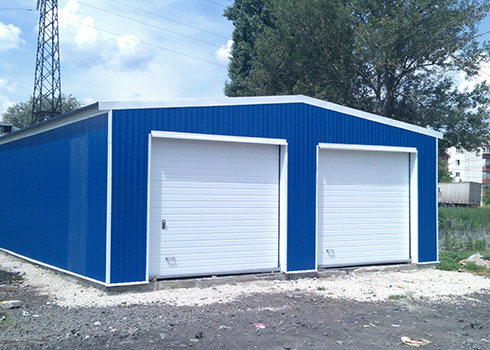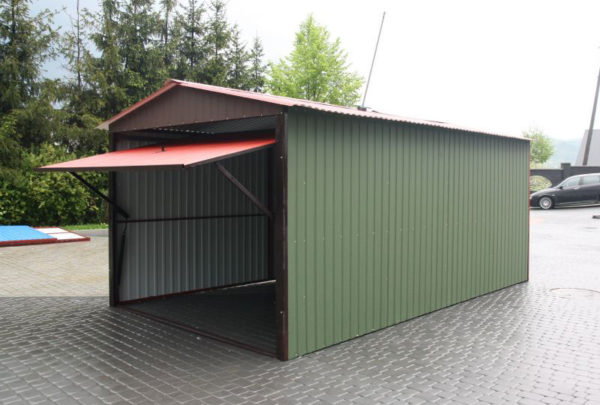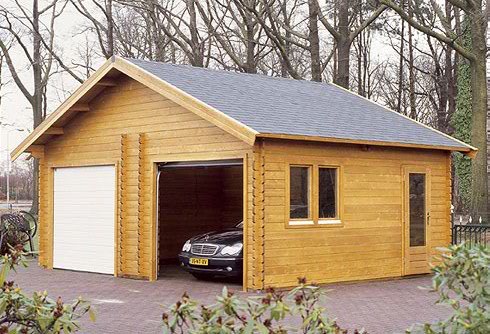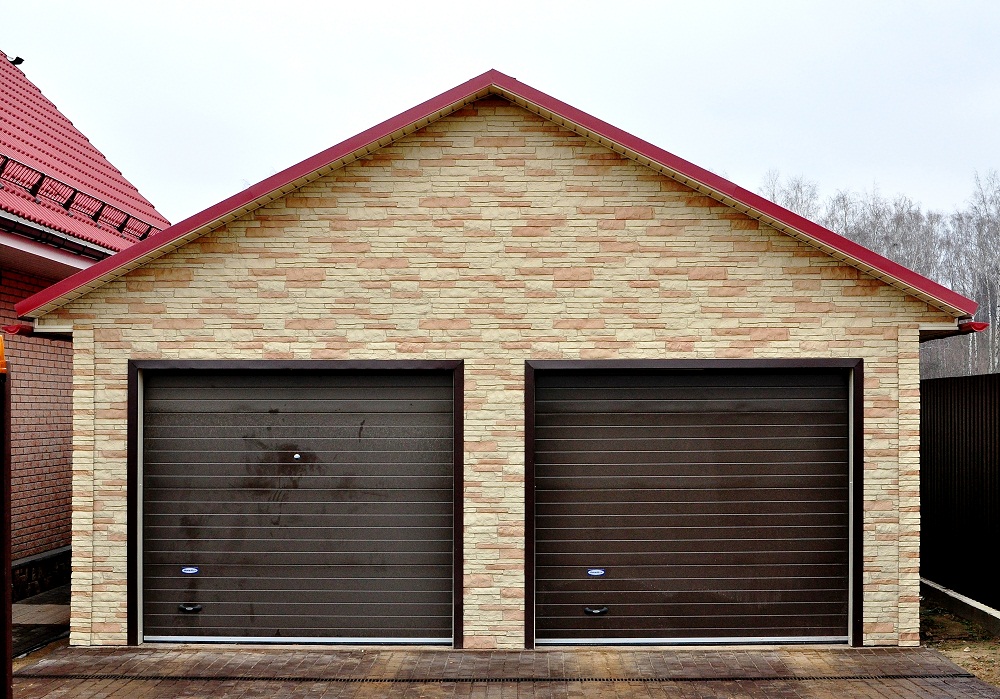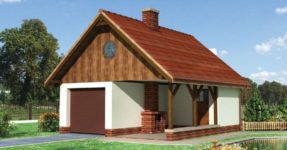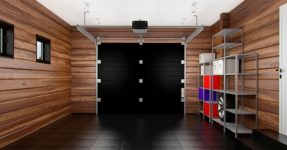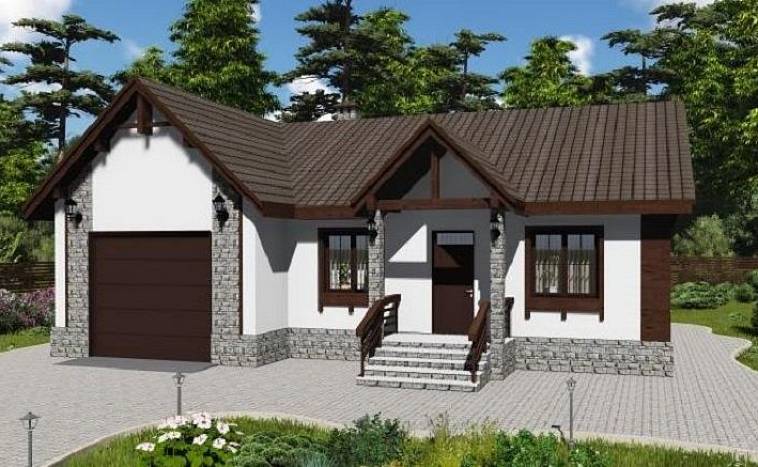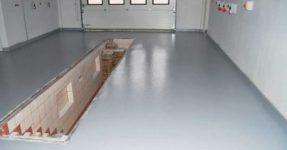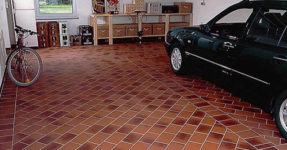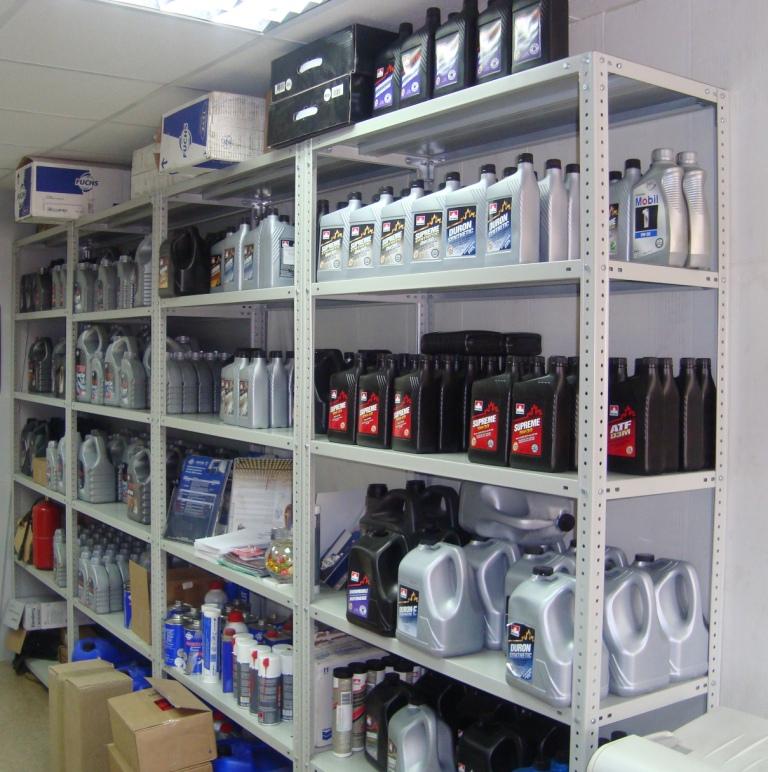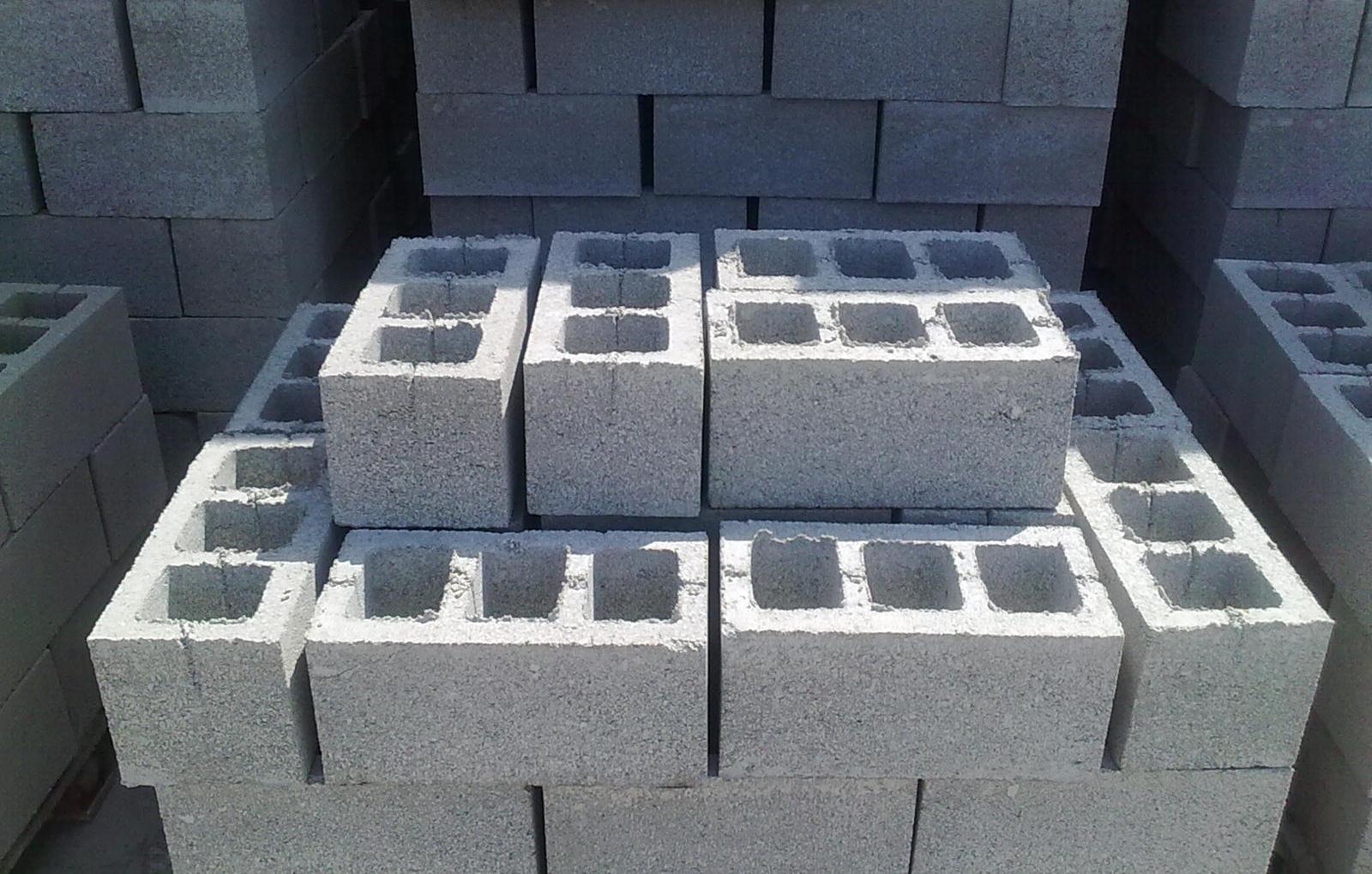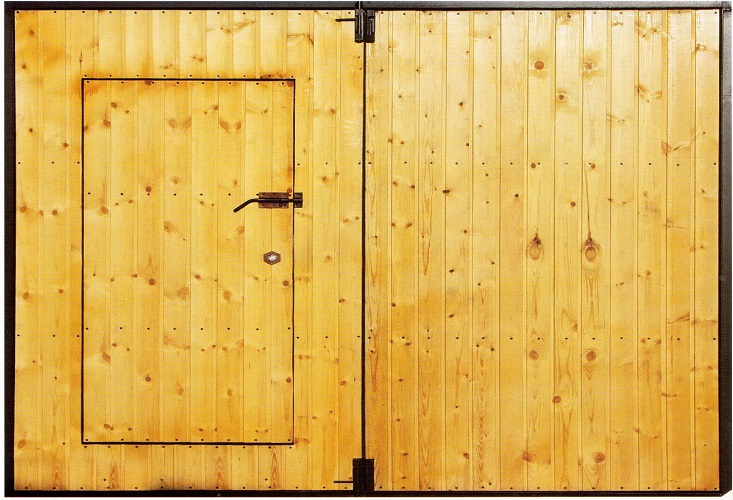What to build a garage from: 7 best materials for a garage
The garage has long ceased to be just a parking lot, taking over the functions of a workshop and pantrieswhere not only tools are stored, but also sometimes food supplies. To ensure the integrity and safety of all this stuff, it is necessary that the garage is well protected from rain, sun, temperature extremes and intruders, is reliable and convenient. That is why it is so important to decide what to build a garage from. Regardless of whether you yourself will be engaged in construction or entrust this work to the masters, you must be in the subject, therefore we offer you to get acquainted with the best materials for the garage.
Garages are capital and temporary. Temporary buildings are much easier to arrange, save time not only during the construction process, but also at the stage of obtaining the necessary documents. Nevertheless, such constructions cannot be called reliable, therefore it is better to erect a major garage.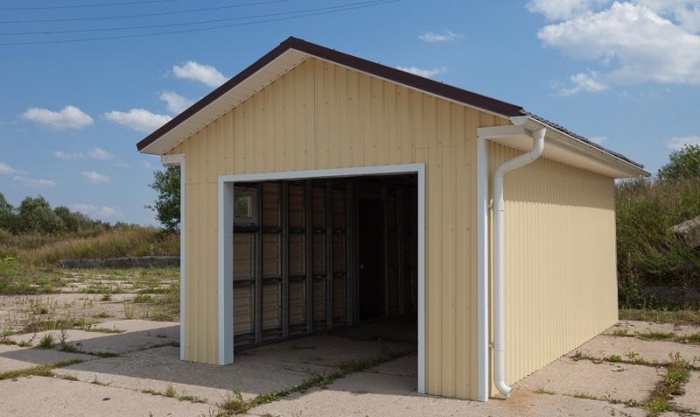
The question of the choice of material for construction becomes one of the first. Going through the possible options is worth consider the following factors:
- functions assigned to the garage. Will the car just stand in the room, or will the garage often be used as a workshop? Perhaps you want to equip a storage place or a small recreation area? Will communications fail or not? In all these cases, the recommended material will be different;
- climate of the region. If the microclimate in the garage is even a little important (and for any car owner who cares about his iron horse, it is important), then you need to make an adjustment for the climate of the region. Lucky for those who live in an area with a mild climate and warm winters, almost any material is suitable. If the climate is severe, then it is better to build a garage from a material with higher thermal insulation properties and, of course, use insulation;
- construction time. A brick garage is built longer than a sandwich panel garage;
- budget. Profiled sheet will cost several times cheaper than brick. Another question - are you ready to sacrifice reliability, trying to save? However, a compromise solution can be found to be both inexpensive and reliable;
- installation complexity. If you plan to build a garage with your own hands, then this is almost the first factor affecting the choice of material.
It is difficult to answer unequivocally which material for building a garage is difficult. Someone puts safety in the first place, so he chooses a brick or a foam block, not afraid to spend money on the material itself and arranging a reliable foundation. Someone is limited in funds, because he chooses a cheap professional sheet, but he must be prepared that on one not very beautiful day someone can easily cut and hijack a car such walls. In general, we analyze the pros and cons and choose the ideal material in each case.
Brick
What can be more traditional, proven and reliable than brick? If you need a capital garage for centuries, with a viewing pit or cellar, with a workshop or storage area, then it is the place to stop at brick.
Benefits:
- strength, reliability, durability up to 50 years or more;
- from a brick you can build a two-story garage;
- the brick does not burn, but for the room where gasoline, diesel fuel and other easily flammable liquids are stored, this is very important;
- from a brick, a capital garage is obtained, in which it is possible to conduct light, water, and even gas.If your plans organize in garage baththen the brick will become one of the most suitable materials;
- good protection against intruders, which is especially important if the garage is located in a garage cooperative;
- environmental friendliness;
- brick is an aesthetic material that can do without additional exterior decoration.

disadvantages:
- brick is far from the cheapest material;
- difficulties in construction. Laying a brick is a troublesome business, and in order to get a really durable building, it is better to turn to specialists for help;
- the construction process will be lengthy. In addition, you have to spend money on durable foundationsince brick is a heavy material;
- to make the inside of the garage comfortable both in summer and in winter, it is necessary to make rather thick walls, and you can’t do without insulation.
For construction, you can take as red (ceramic)and white (silicate) brick. The latter received wider distribution due to the low price and fairly good performance.
Air blocks and gas blocks
On the basis of concrete, a considerable number of different blocks are produced, but the most popular are blocks from foam concrete and aerated concrete. They are similar in some characteristics, but radically different in the manufacturing process. Both materials belong to the class of cellular concrete, since there are air bubbles in their structure. In the manufacture foam concrete foaming agents are used to obtain these same bubbles, which, when interacting with water, form a foam. As a result, many air bubbles form inside the solution. The solution thus prepared is poured into molds, where it solidifies, forming ready-made blocks.
Production technology aerated concrete different. Here voids are formed due to a chemical reaction. Lime and aluminum powder are added to the concrete, under the influence of high temperature and pressure in the autoclave, hydrogen begins to liberate, forming bubbles inside the blocks. If foam concrete is immediately poured into molds according to the size of future blocks, then aerated concrete is immediately made large, and then cut into blocks of the required size. It turns out that the pores in the foam concrete are closed, and in the gas concrete - open, because the latter is more afraid of water and requires careful protection from it.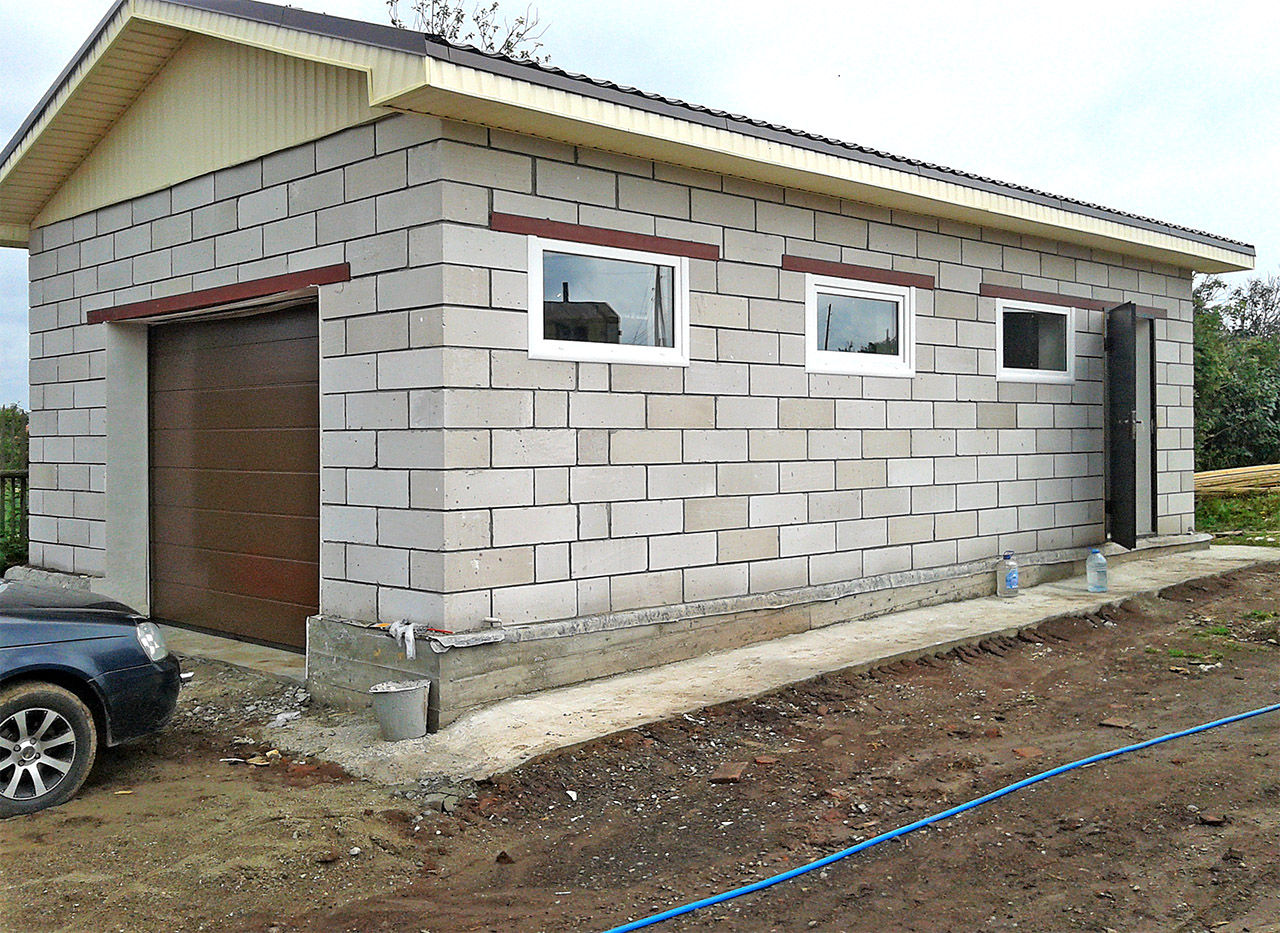
Benefits:
- excellent heat-insulating qualities, which saves on insulation and heating. The foam block, for example, is 3.5 times warmer than brick, and aerated concrete is warmer than foam concrete due to a more uniform structure;
- high speed of construction, since the blocks of cellular concrete are several times larger in size than brick. In addition, they are easier, quite simply cut;
- the possibility of building a two-story garage and all the necessary communications;
- relatively low price;
- high strength, but foam blocks are almost twice as inferior to gas blocks in this parameter;
- a lightweight foundation can be erected, since the weight of the blocks is small;
- blocks do not burn;
- good vapor permeability, almost like wood, so the garage will always maintain the optimal microclimate;
- frost resistance. The material withstands up to 50 cycles of freezing and thawing;
- good soundproofing.
disadvantages:
- the gas block is hygroscopic, therefore it is necessary to pay attention foundation waterproofing, as well as perform exterior wall decoration to protect the material from constant exposure to moisture. The foam block is not so afraid of moisture, but you still have to finish it because of the not very attractive appearance;
- the possibility of cracks, but if the blocks are installed correctly, the probability of this flaw is tending to zero;
- the need to use special fasteners for mounting shelves, racks, cabinets, etc.
In addition, gas blocks also benefit in terms of shrinkage - only 0.5 mm / m versus 2-3 mm / m in foam blocks.
Cinder block
Appearance story slag concrete is inextricably linked with the construction of garages.The first cinder blocks were used by Nicholas II precisely for the construction of a garage. Then for the manufacture of this building material used waste from the combustion of coal, the so-called slag, which gave the name to the blocks. The appearance of cinder blocks solved two problems at once: the constant shortage of bricks and the need to dispose of previously useless waste from blast furnaces and thermal power plants.
The durability of the first buildings made the material quite popular, however, over a century the technology of its production has changed somewhat. The base of cement and sand add filler from slag, expanded clay, cullet, sawdust, crushed stone, granite screenings, shell rock, etc. Until the 70s, slag concrete was used mainly for the construction of garages, sheds and other utility and utility rooms. Now even residential buildings are being built from it. The cinder block is also popular as a material for the construction of garages.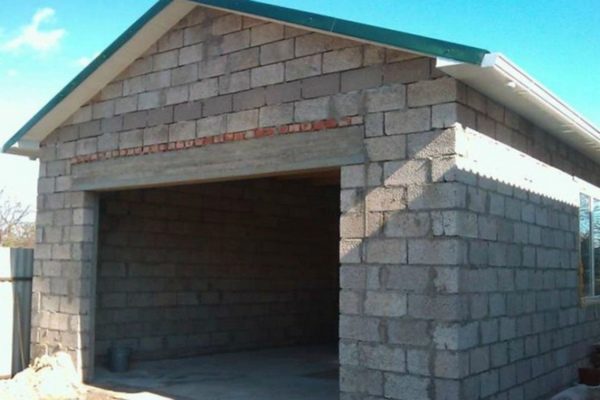
Benefits:
- light weight and large block size, which facilitates the construction process and allows you to save on the construction of the foundation;
- low price. This is perhaps the most budget material of all those listed in the article;
- strength and reliability, durability up to 100 years;
- fire resistance mold and rodents.
disadvantages:
- low thermal insulation qualities, when compared with other concrete blocks. But, nevertheless, the cinder block is warmer than brick, therefore, when constructing a garage, it will be possible to do even without insulation;
- not very good appearance, therefore, without finishes not enough. Manufacturers are working on this problem and already offer blocks in which one side has a decorative coating;
- hygroscopicity;
- the difficulty of attaching objects to the walls and difficulties in laying communications.
If the task is to spend as little money and time on the construction of the garage, but at the same time get a solid solid structure, then cinder blocks will be almost the best choice.
Expanded clay blocks
This material is not as popular in the construction of garages as aerated concrete or cinder blocks, but in harsh climates it has no equal thermal conductivity. Expanded clay (granules with a size of 5-40 mm) is added to a cement, sand and water base traditional for concrete blocks. Expanded clay is a light but quite durable material, and due to its porous structure it retains heat well, because the more expanded clay is in the block, the higher the level of thermal insulation can be obtained as a result.
pros:
- excellent thermal insulation properties, because the material is indispensable in the northern regions;
- as for other concrete blocks, for expanded clay blocks light weight and large size are characteristic, due to which the construction will advance quickly, while managing to do with a lightweight foundation;
- strength, durability up to 100 years;
- vapor permeability and environmental friendliness;
- minimum shrinkage rates;
- resistance to frost, temperature extremes, high humidity, rodentsmold;
- relatively low price.

It would seem that we have the perfect material, but our minuses he also has:
- difficulty in processing blocks. If cellular concrete can be cut with a hacksaw, then for expanded clay concrete it is necessary to use a saw with teeth from Pobedit;
- difficulties in fixing, but you can use anchor bolts and dowels;
- not a very nice surface, because the walls will have to be faced.
Since any car owner wants to equip a warm and dry shelter for his car, the popularity of expanded clay blocks only increases.
Also, other blocks are used in the construction of garages, but due to the presence of critical shortcomings, we would not recommend them for use. For example, gas silicate blocks are highly hygroscopic, and polystyrene blocks have low strength, so you can encounter difficulties in installing the gate. A good option would be wood concrete, which has gorgeous thermal insulation qualities, but it is afraid of moisture, frost and costs more than aerated concrete.
Sandwich panels
If the task is to build a garage in just a week, then a better solution than sandwich panels can not found. This is a multilayer material consisting of a layer of insulation, which is covered on both sides by metal, plastic, drywall or OSB-stove. For the garage use metal panels. Acts as a heater Styrofoam, mineral wool, polyurethane foam. For a garage, it is better to take panels insulated with polyurethane foam, which has a minimum coefficient of thermal conductivity, is not afraid of moisture and is capable of self-extinguishing. You can also dwell on products with mineral wool - it does not support combustion, but is hygroscopic. Polyfoam is not afraid of water, but it burns and can become a haven for rodents.
pros:
- high speed of construction - the garage can be ready in 3-5 days;
- relatively low cost, especially when compared with a brick;
- high level of thermal insulation, the ability to do without heating;
- ease of construction, the ability to carry out work even in winter;
- You can equip a lightweight foundation, since the sandwich panels are quite light;
- if necessary, such a garage can be disassembled and assembled in a new place;
- excellent appearance, no need for additional decoration.

Minuses:
- some heaters do not have sufficient fire safety;
- the need for qualifications for the correct installation of panels, otherwise there may be gaps in which cold air will constantly blow;
- low strength: if the region is characterized by frequent hurricane winds, earthquakes and heavy rains with hail, it is better to choose a different material;
- with constant exposure to direct sunlight and sudden changes in temperature, there is a possibility of deformation, which can lead to depressurization of joints;
- the inability to mount cabinets and shelves on the walls - everything will be mounted on the floor.
Yes, there are many shortcomings, but for many car owners they do not become significant, because sandwich panels are widely used in garage construction.
Professional sheet
Another way to quickly build a garage is to use profiled sheet. These are sheets of steel with a protective layer, and additional strength is determined by the presence of relief, this is the so-called. stiffening rib.
Benefits:
- low price;
- low weight of the material, which simplifies transportation and construction, allows you to save on the arrangement of the foundation;
- such a garage can be built with your own hands;
- a garage from a professional sheet can be disassembled and assembled in a new place.

Cons more:
- low level of security, since the professional sheet is easy to cut;
- low level of thermal insulation. In a non-insulated garage it will be slightly warmer than on the street, therefore warming must be foreseen;
- the inability to attach shelves and cabinets to the walls - only to the floor;
- metal, although strong, but dents can remain on it, which are not easy to fix, because gradually the appearance of the building will deteriorate.
Wooden beam
In general, wood is not a very suitable material for the construction of garages, but thanks to the use of modern impregnation, which protect the wood from fire, moisture and pests, it was possible to obtain a more or less stable building material. A wooden garage will look good on the territory of a suburban area where it has already been built wooden bath, or even a house built or decorated with wood.
Benefits:
- excellent appearance;
- environmental friendliness;
- high heat-insulating qualities, because wood is one of the warmest materials;
- relatively short construction periods;
- the ability to mount cabinets and shelves on the walls;
- relatively low cost.

disadvantages:
- even if the wood is treated with modern varnishes and impregnations, in terms of resistance to fire, moisture, temperature extremes and pests, it will still be inferior to brick and aerated concrete;
- the wooden building will not be in harmony with the house built in a modern style of concrete and glass.
The optimal material for the garage can be considered foam concrete, as well as aerated concrete and slag concrete. If the speed of construction is important to you, then choose a sandwich panel. A professional sheet is suitable if the garage is located in a crowded place, then attackers will not risk cutting metal. Brick is an option for conservatives who have the time and money.



